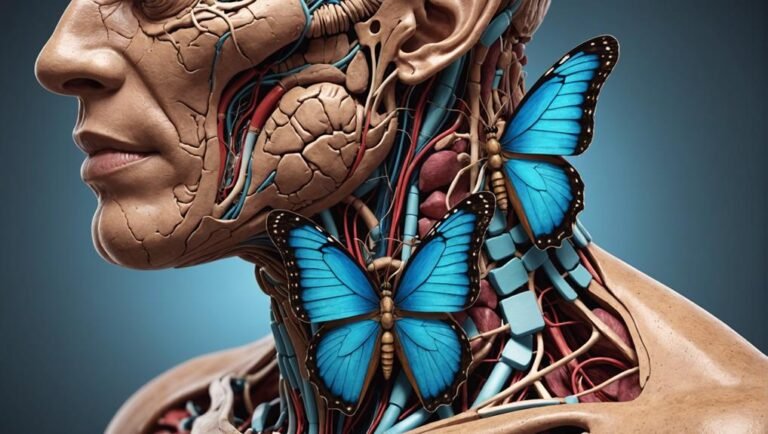Bladder Problems: Managing Infections, Incontinence, and Other Issues – Harvard Health
Bladder issues like infections and incontinence can greatly impact one's quality of life. Understanding the anatomy and functions of the bladder is essential for diagnosis and treatment. Seek medical advice for persistent symptoms. Bladder infections are often caused by abnormal bacterial growth; preventive measures include good hygiene and drinking water. Different types of incontinence, like stress and urgency, require personalized treatments. Treatment options may include bladder training, pelvic floor therapy, or medications. For severe cases, surgical procedures may be necessary. Effective management is key. Further information on managing bladder problems awaits.
Key Takeaways
- Prevention strategies include good hygiene, hydration, and avoidance of irritants.
- Cranberry may help prevent UTIs by inhibiting bacterial growth.
- Different types of urinary incontinence: stress, urgency, mixed, and overflow.
- Tailored treatment plans for neurological impairments and functional disabilities.
- Treatment options range from lifestyle modifications to surgical interventions based on individual needs.
Bladder Problems Overview
Bladder problems encompass a range of common conditions such as urinary tract infections, urinary incontinence, and bladder stones, affecting the normal functioning of the urinary system. The bladder, a hollow muscular organ, is an essential part of the urinary system responsible for storing urine until it is expelled from the body.
Urinary system functions include the production, storage, and elimination of urine to maintain bodily homeostasis. Bladder anatomy consists of different layers of tissue that expand and contract as urine fills and empties. Understanding these functions and anatomy is important in diagnosing and treating bladder issues effectively.
Seeking medical advice for any persistent symptoms is essential to address bladder problems promptly and ensure overall urinary system health.
Bladder Infections: Causes and Treatment
Understanding the reasons and treatment options for bladder infections plays a crucial role in addressing and managing this common urinary issue effectively. Bladder infections, often caused by abnormal bacterial growth in the bladder, can lead to discomfort and potential complications.
To tackle this condition proactively, individuals can benefit from the following strategies:
- Prevention Strategies:
- Maintaining good hygiene practices.
- Drinking an adequate amount of water daily.
- Avoiding irritants like strong soaps or perfumed products.
- Cranberry Benefits:
- Consuming cranberry juice or supplements may aid in preventing urinary tract infections.
- Cranberries contain compounds that could potentially inhibit bacteria from adhering to the bladder walls.
- Further research is ongoing to solidify the efficacy of cranberry in preventing UTIs.
Urinary Incontinence Types
Distinguishing between various types of urinary incontinence is essential for understanding the specific underlying causes and appropriate treatment approaches. The different types of urinary incontinence include stress, urgency, mixed, and overflow. Stress incontinence results from weakened pelvic floor muscles, while urgency incontinence involves a sudden urge to urinate. Mixed incontinence combines symptoms of both stress and urgency. Overflow incontinence occurs when the bladder does not empty completely, causing continuous urine dribbling. Effective incontinence management strategies and understanding bladder control are vital for improving quality of life. Below is a table summarizing the key characteristics of each type:
| Type | Description |
|---|---|
| Stress Incontinence | Weakened pelvic floor muscles lead to urine leakage. |
| Urgency Incontinence | Sudden, overwhelming urge to urinate. |
| Mixed Incontinence | Combination of stress and urge symptoms. |
| Overflow Incontinence | Bladder does not empty completely, causing constant dribbling. |
Specific Incontinence Types and Causes
Effective management of specific types of urinary incontinence is essential for understanding the underlying causes and providing appropriate treatment interventions. When it comes to incontinence related to neurological impairment or functional disabilities, it is important to address these issues with specialized care. Here are key points to keep in mind:
- Neurological Impairment: Individuals with conditions like multiple sclerosis or spinal cord injuries may experience reflex incontinence, leading to involuntary urine leakage.
- Functional Disabilities: In cases of functional incontinence, illnesses or disabilities unrelated to physical bladder problems can result in the inability to control urination effectively.
- Tailored Treatment: Customized treatment plans considering the specific challenges posed by neurological impairment or functional disabilities can greatly improve the management of urinary incontinence.
Bladder Issue Treatment Options
Treatment options for bladder issues encompass a range of interventions tailored to address individual needs and improve quality of life. For managing incontinence, various approaches are available based on the type and severity of the condition. These may include:
- Bladder training to improve control
- Fluid management strategies
- Pelvic floor physical therapy to strengthen muscles
- Biofeedback techniques for enhancing awareness
- Lifestyle modifications like dietary adjustments
- Medications to alleviate symptoms
- Surgical procedures for more severe instances
It is essential to consult healthcare providers to determine the most suitable treatment plan, as options differ for men and women, ensuring personalized care for best outcomes in bladder issue management.
Managing Urinary Incontinence
Moving forward to address the challenges of urinary incontinence, a holistic approach to managing this condition involves personalized interventions aimed at enhancing bladder control and improving overall quality of life. To achieve this, individuals can consider the following:
- Pelvic exercises: Strengthening the pelvic floor muscles through targeted exercises can help improve bladder control and reduce episodes of urinary incontinence.
- Behavioral therapy: This therapy focuses on identifying triggers, such as certain activities or beverages, and developing strategies to manage and reduce urinary incontinence episodes.
- Lifestyle modifications: Making changes in diet, fluid intake, and toilet habits can also play a significant role in managing urinary incontinence effectively.
Improving Quality of Life
Enhancing daily activities and promoting emotional well-being are key aspects of managing bladder issues to improve overall quality of life. Lifestyle modifications such as dietary changes and exercise routines play an important role in enhancing bladder health. By maintaining a healthy diet and engaging in regular physical activity, individuals can support bladder function and potentially reduce the risk of bladder problems.
Additionally, emotional support is essential in coping with the challenges that bladder issues may present. Seeking support from healthcare providers, support groups, or mental health professionals can help individuals navigate the emotional aspects of living with bladder problems. Overall, a holistic approach that includes lifestyle adjustments and emotional support can greatly enhance the quality of life for individuals managing bladder issues.
Conclusion
To sum up, managing bladder problems, including infections and incontinence, is crucial for maintaining excellent bladder health. By understanding the causes, symptoms, and treatment options available, individuals can take proactive steps towards improving their quality of life.
Through tailored approaches such as bladder training, physical therapy, medications, and surgical interventions, individuals can find relief and successfully manage their bladder issues. By addressing these concerns, individuals can enhance their overall well-being and enjoy a better quality of life.







